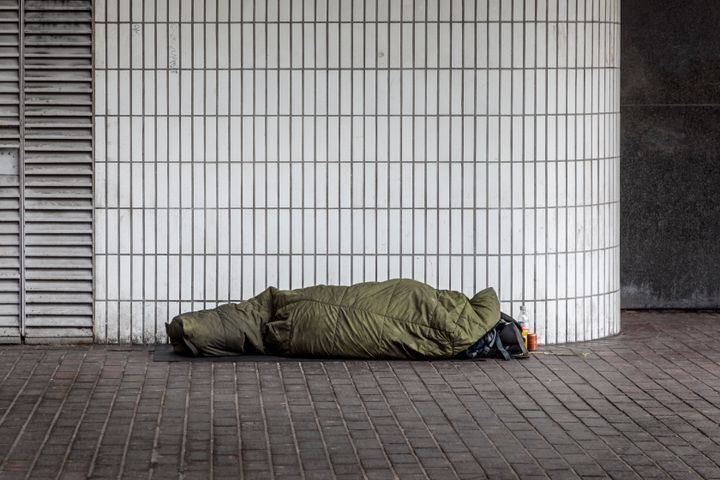The number of households classed as either homeless or threatened with homelessness has increased by more than 10% in England, government figures reveal.
Between January and March 2019, a total of 70,430 households were assessed as falling within this category – a 10.7% increase from 63,620 in the previous quarter (October to December 2013).
Of these, 37,690 households were deemed to be threatened with homelessness (and increase of 10.2%) and 32,740 households were assessed as actually homeless (up 11.2%).
Leading homelessness charity Shelter have said the new figures equate to one household becoming homeless every four minutes in the past year (April 2018 to March 2019).
Polly Neate, the charity’s chief executive, said: “During a year where Brexit negotiations have totally dominated the political agenda, catastrophic numbers of people have become homeless. While the housing crisis is out of the spotlight, families with young children are trapped in grim temporary accommodation like B&Bs and shipping containers, and young people feel the damaging effects of growing up in a housing emergency.
“Cripplingly expensive private rents, frozen housing benefits, and lengthy waiting lists for social homes are pushing people to the sharp edge of a housing emergency which won’t go away without genuinely affordable homes.
“The government must invest in a new generation of social homes – three million more in 20 years – if they are to pull hundreds of thousands of people out of homelessness. And in the meantime, they must urgently increase housing benefit so that it covers at least the bottom third of private rents.”
The data, released by the Ministry of Housing on Thursday, reveals that the most frequently-given reason for becoming homeless is the individual or household no longer being accommodated by family or friends.
The second most significant reason was listed as falling under the ‘other’ bracket – which the Ministry of Housing has described as ‘overused by some local authorities’ – with the next most common cause listed as the end of a tenancy of a private rented property.

A violent relationship breakdown was listed as the third most common cause, with a non-violent relationship breakdown coming in fourth.
Following the release of the figures the National Housing Federation said the numbers of households and families in temporary accommodation had reached an eight-year high, with the number of children living in temporary accommodation rising to 126,020 – up 83% since its the lowest point in June 2011.
The number of children living in temporary accommodation is projected by the organisation to reach its highest ever levels by December 2020.
Kate Henderson, chief executive at the National Housing Federation described the situation as “unacceptable” and urged the government to take urgent action in order to tackle the homelessness problem, calling on them to invest £12.8billion a year specifically into new social housing.
The report shows prevention duty - which aims to help stop households from becoming homeless - ended for a total of 31,930 households, a 1.5% increase on the previous quarter.
More than half were ended because the households found secure accommodation and were no longer deemed homeless or at risk, however 18.9% were ended due to the household becoming homeless and therefore being owed relief duty.
Relief duties ended for more than 32,000 households across England - a 7.5% increase on the previous quarter. For 40% of these households, this was due to accommodation being secured for at least six months.
Meanwhile, for 11,530 households, the relief duty ended because homelessness had not been relieved within 56 days - after which they are owed ‘main’ homelessness duties. This main homelessness duty decreased by 1.4% to 7,680 households.
As of March 31, 2019, the number of households in temporary accommodation was 84,740, up 1.4% from figures recorded on the same date in 2018.
The government said the figures released today showed that “more people than ever before have been entitled to support to prevent homelessness”, a year on from the introduction of the Homelessness Reduction Act.
Minister for Homelessness Luke Hall MP said the data shows ”progress is being made”, with the Act helping people earlier in order to help them avoid homelessness altogether.
He said: “There is still more to do though, which is why we have committed a record investment to ending homelessness and rough sleeping for good.
“This vital funding will ensure progress continues to be made, with people given the help they need to turn their lives around.”

